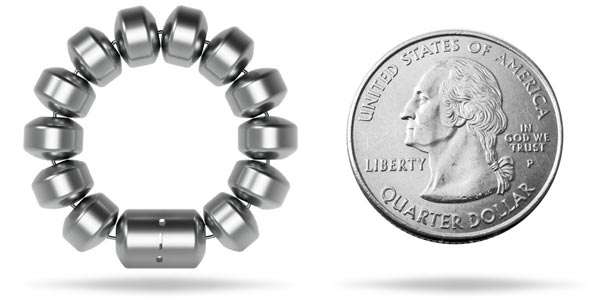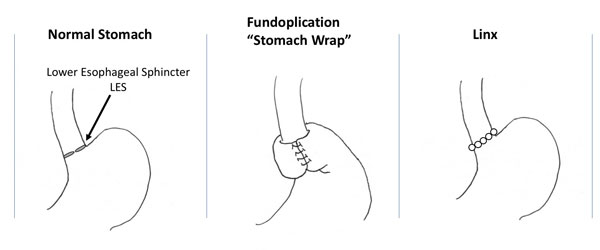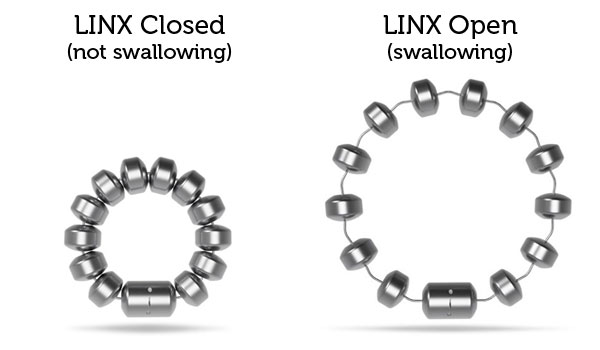LINX® Reflux Management System
What is LINX®?

LINX® is an exciting new way to treat GERD that brings the excellent results of the traditional surgical approach, the fundoplication, without the invasiveness, permanence and side-effects that often accompany the fundoplication procedures.

It is a very clever device comprised of a bracelet of magnetic beads that is surgically placed around the end of the esophagus over the weak lower esophageal sphincter (LES). The magnetic attraction of each of the beads helps hold the Linx device closed and in this way augmenting the LES. When food is swallowed, the force of swallowing beaks the magnetic connection between the beads causing the LINX® device to open allowing the food to pass into the stomach. The device then quickly closes to maintain the barrier against reflux.

How is the LINX® Device Placed?
The device is placed during a minimally invasive surgical procedure that takes less than one hour. It is an outpatient procedure allowing patients to avoid an overnight stay in the hospital that is common with the fundoplication and other anti-reflux procedures. Most patients can return to work and regular activity within a few days of surgery.
There is the need to follow a special diet for a few weeks after surgery to allow the device to "break-in" and the body to heal the area around the device. For some patients, especially those who also have a hiatal hernia, there may be the need to limit heavy lifting or vigorous exercise for one month after surgery to allow the hiatal hernia repair that accompanies the device placement to heal.
Who Benefits from LINX®?
LINX® is now the first choice for the majority of patients who need surgery to correct GERD, even those with a large hiatal hernia or who need a revision from an earlier reflux operation. Of course some routine testing is needed before a final decision about the use of LINX® can be made. Typical testing required includes:
- Upper Endoscopy (EGD)
- Barium Swallow
- Esophageal pH Test
- Esophageal Motility Study
How Long Has LINX® Been Used?
LINX® has been used to treat GERD for over 10 years, first outside of the United States, with the first U.S. implants being done in 2008-2009 as part research needed to gain FDA approval. It was approved by the FDA in March of 2012. More detail about the research that supports the safety and effectiveness of the LINX® device and procedure can be found on the LINX® website.
LINX® Publications
Dr. Daniel Smith has expertise performing the LINX® procedure. The following are some articles published by Dr. Smith.
- Esophageal Sphincter Device for Gastroesophageal Reflux Disease
- Introduction of Mechanical Sphincter Augmentation for Gastroesophageal Reflux Disease into Practice: Early Clinical Outcomes and Keys to Successful Adoption
- Objective Evidence of Reflux Control After Magnetic Sphincter Augmentation - One Year Results From a Post Approval Study
- Long-term Outcomes of Patients Receiving a Magnetic Sphincter Augmentation Device for Gastroesophageal Reflux
- Lower Esophageal Sphincter Augmentation for Gastroesophageal Reflux Disease: The Safety of a Modern Implant
- Worldwide Experience with Erosion of the Magnetic SphincterAugmentation Device
Is LINX® Covered by Insurance?
Regrettably, many insurance companies still do not officially cover the LINX® procedure. This means that a request needs to be submitted to your insurance company asking for prior approval for this operation. Through a series of appeals, up to 70% of the "denials" for the LINX® procedure are overturned eventually approving the procedure. This process can take several weeks or even several months.

 Map & Directions
Map & Directions Office Hours
Office Hours